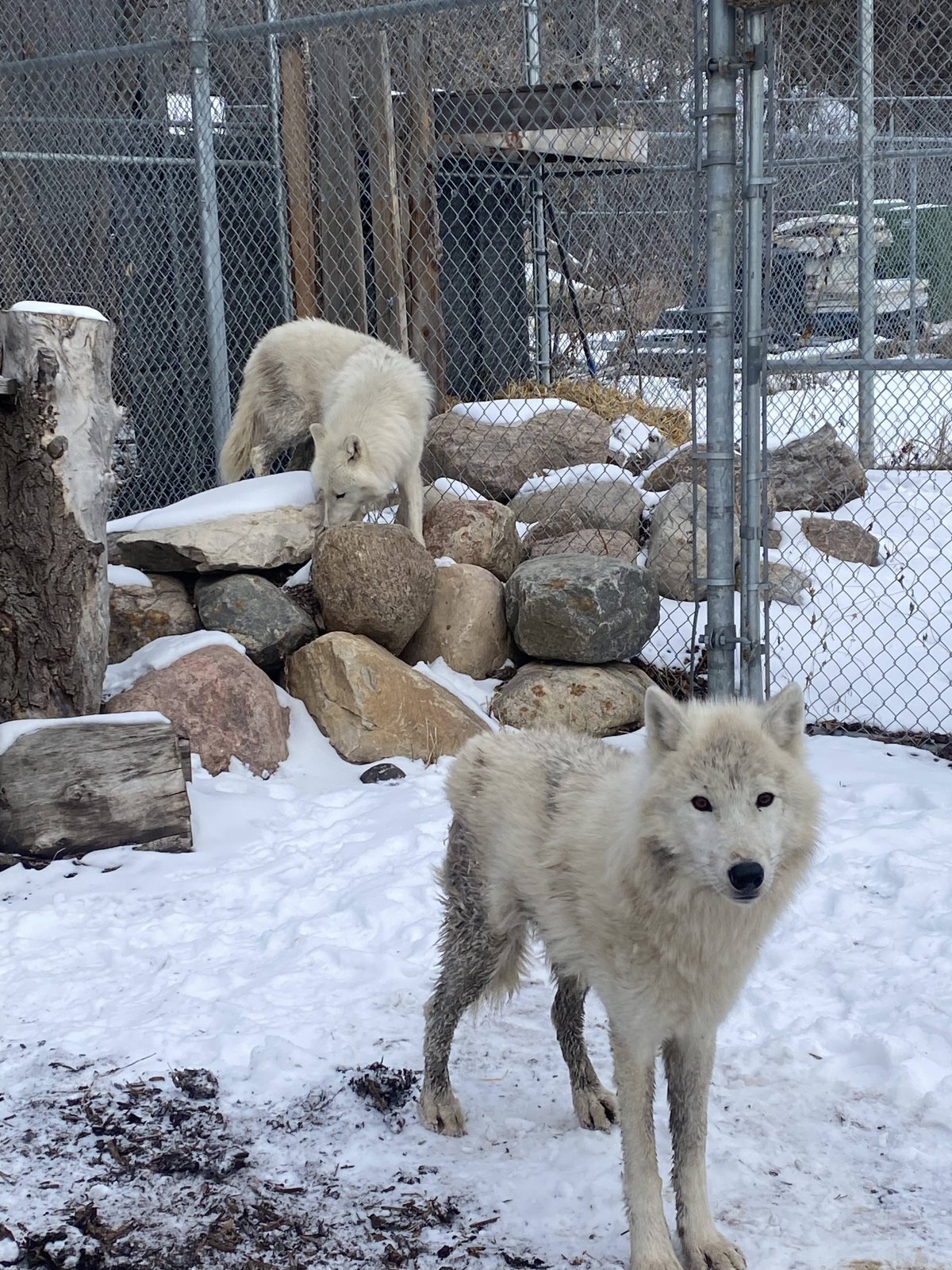The Edmonton Valley Zoo welcomed two female Arctic wolves on Feb. 14.

The pair arrived from Parc Zoologique CERZA in Hermival-les-Vaux, France, on Valentine’s Day.
Appropriately — given the timing — the new wolves were carefully selected by officials who spent more than a year searching for suitable companions for Tundra, a male Arctic wolf at the Edmonton zoo, whose partner Shilah died in 2022.
“Arctic wolves are pack animals so it was important to find the right fit for Tundra,” said Laura Castor, animal care team lead at the zoo. “It has taken a lot of time and effort to get to this point and we couldn’t be happier with this result.”
The female wolves are two and three years old and are sisters from different litters.
The new wolves, who have not yet been named, will spend the next 30 days in quarantine before being slowly introduced to Tundra in his current habitat, which is standard practice.
“This allows us to make sure they are healthy and aren’t carrying any illnesses. It also allows the animals some time and privacy to adjust to a new care team and new surroundings.”

It also means the two new wolves will be gradually introduced to Tundra to make sure they’re safe and comfortable together.

Get daily National news
They won’t all be allowed in the same space for a few more months and even then, they’ll be closely monitored by the team.
Zoo attendant Trevor Hickey hopes they all get along well.
“They’re all wolf-raised wolves so they know how to communicate instinctively,” he said.
“We hope to have a multi-generational natural wolf pack here at the zoo. So if we have wolf pups in the future, that would be great. Whether or not they’re Tundra’s that remains to be seen.”
The zoo said all three wolves will be relocated to the new Arctic Wolf habitat, which is expected to be ready to open in the summer. The space has 5,000 square metres of naturalized habitat.
“We are thrilled to be able to provide Tundra and his new pack with a beautiful, enriching and stimulating new environment,” said Tammy Wiebe, executive director of the Valley Zoo Development Society, which helped fund the new space.
“Thanks to the Malliner Charitable Foundation and our other generous donors, we are able to provide a new habitat for the wolves that aligns with their natural instincts and encourages natural behaviours. We also aim to promote awareness of the Arctic wolves’ conservation needs.”

The Arctic wolf is a subspecies of the grey wolf and lives in the Arctic regions of North America and Greenland. Its greatest threat is climate change.
“It’s our hope that seeing these beautiful animals in a stunning new environment will inspire people to take action against climate change to help species like this one,” said Wiebe.





Comments